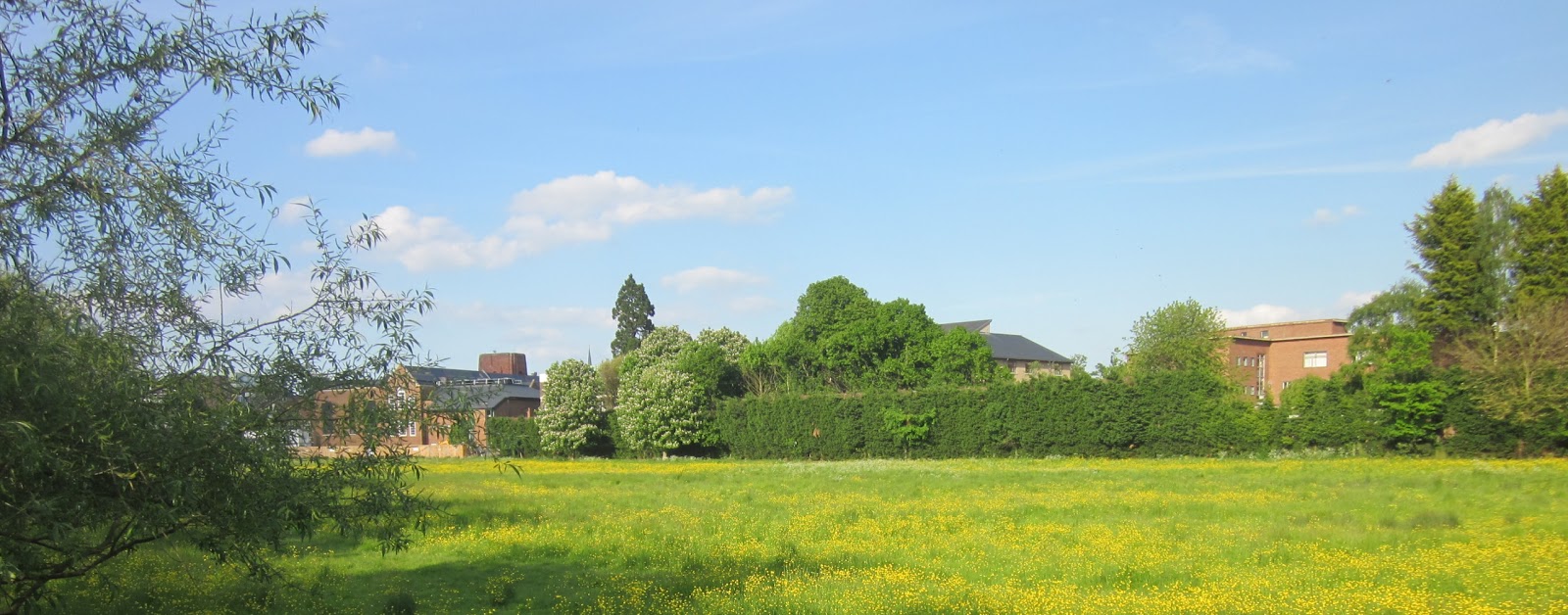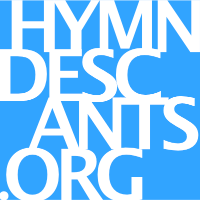
Descant to the hymn tune COE FEN. Free score with harmonized descant and separate choir part. (Image: the Coe Fen grazing meadow, bounded by The Leys School, Cambridge - via RadWagon) Free score.
1 hymnal (Ken Naylor)
How shall I sing that majesty
which angels do admire?
Let dust in dust and silence lie;
sing, sing, ye heavenly choir.
Thousands of thousands stand around
thy throne, O God most high;
ten thousand times ten thousand sound
thy praise; but who am I?
2. descant
How great a being, Lord, is thine,
which doth all beings keep!
Thy knowledge is the only line
to sound so vast a deep.
Thou art a sea without a shore,
a sun without a sphere;
thy time is now and evermore,
thy place is everywhere.
T he text "How shall I sing that majesty" is taken from a 1683 volume of poems by John Mason (1646-1694), one of the earliest poetic hymn writers (as opposed to psalmodic) of the Church of England. Originally a priest of the Anglican church, he became a 'dissenter,' administering no sacraments and choosing to focus instead on preaching. His focus was almost exclusively on the millennial advent of Christ, convinced it was imminent. The text appeared in this form with the English Hymnal (1906) and draws on a comparison between the feeble praise offered on earth compared to that offered by those in the presence of God. The tune was written by school teacher Ken Naylor (1931-1991) and named for a grazing meadow on the River Cam, abutting The Leys School in Cambridge, where he taught; the fen also borders Cambridge University and the Fitzwilliam Museum.
The great Creator of the world is a translation and versification from an early church document by F. Bland Tucker. Tucker was of distinguished Episcopal stock, and a descendant on his mother's side of George Washington. His father and two brothers were bishops - brother George became Presiding Bishop - and Bland himself was elected bishop of Western North Carolina, but he declined the post. He served on the hymnal commissions of both The Hymnal 1940 and The Hymnal 1982.
Descant composed for friend and colleague, Organist and Choirmaster, Samuel Carabetta and the Choir of St John’s Episcopal Church, Georgetown Parish, Washington, DC.
Updated Sept 2019 (rev 2022) to lower tessitura of descant at the cadence, and add alternate ending
How shall I sing that majesty (with two endings)
How great a being, Lord, is Thine, which doth all beings keep!
Thy knowledge is the only line to sound so vast a deep.
Thou art a sea without a shore, a sun without a sphere;
Thy time is now and evermore, thy place is everywhere.
– John Mason, Songs of Praise, 1683

